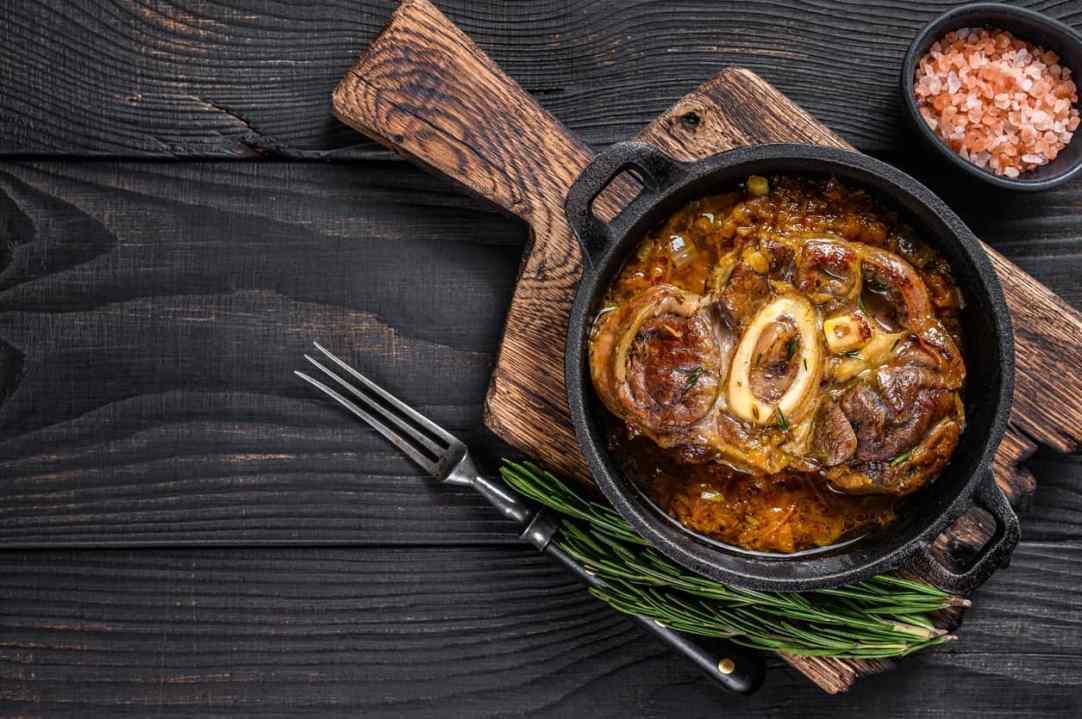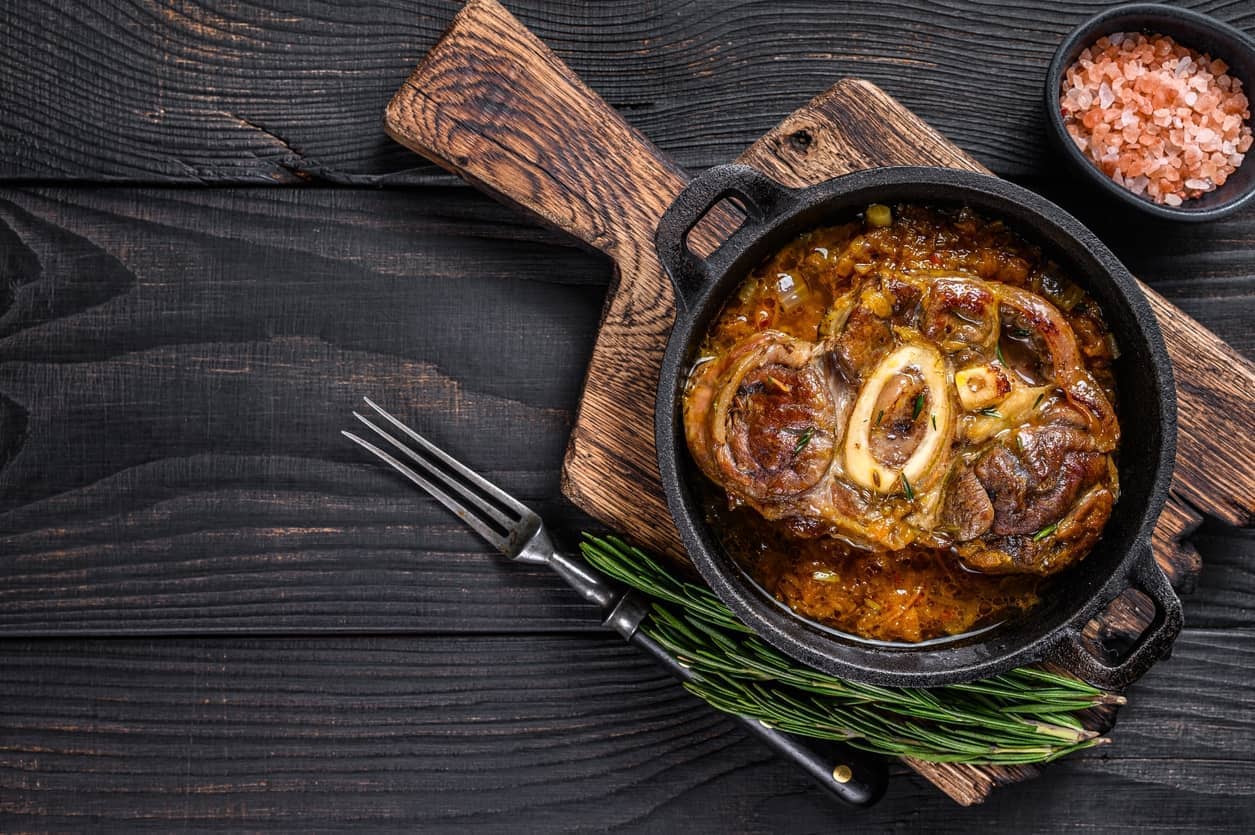I must have written thousands of words about my love of stews, braises, and slow-cooked dishes, but osso bucco must be one of my longtime, unchanging favourites. Osso bucco comes from the Northern Italian region of Lombardy, and is made from braised veal shanks. It’s a cut that not only benefits from, but really needs, a low slow cook, bathing in stock and booze, until the meat is tender enough to be broken apart with the edge of a fork.
The dish name literally translates as ‘hole in the bone’, which quietly points to the magic of the dish (or, you could argue, misses it entirely). Inside that hole is, of course, bone marrow: a big, thick, coin of bone marrow that, as the shanks braise in among the wine and the stock and the aromatics, melts into the sauce, making it luscious, glossy and rich, and completely distinctive.
It’s a dish that we might previously have avoided, or replaced the veal with the equivalent cut of beef, mindful of the troubling welfare issues that went hand-in-hand with eating veal. Now, the rise of rosé veal means that there are higher welfare ways of consuming the meat, that afford the animals a decent life. If you can get hold of rosé veal (your butcher should be able to get it for you, but even some supermarkets now stock it), then I highly recommend sticking to the veal version. Veal has a different flavour to beef: it’s a paler meat, more delicate, less robust than beef.
Some will tell you to tie up the veal shanks, so that they retain their shape while you cook them, but I never bother: it’s a faff, but also the membrane around the shanks should do the job for you. If it doesn’t, nothing terribly happens: it is, after all, a stew, and hardly the end of the world if some of the meat sinks into the sauce.
There are two versions of osso bucco – the classic, and the more modern. The more modern incorporates tomato, whether in the form of paste, tinned, or fresh, whereas the classic eschews all tomato-based products. This naturally makes the braise paler, leading to the name osso bucco bianco. Personally, I prefer it without tomatoes: those delicate flavours of the veal and veg and wine can sing; tomato enriches and brings depth, but it can be a little bit of a bully. The original osso bucco is cleaner in flavour, more elegant. That classic version is usually topped with gremolata, a vibrant mixture of finely cut parsley, raw garlic and lemon zest that will lift both the colour and taste of the dish.
Traditionally, it is served with risotto Milanese – saffron-flavoured risotto often made with veal stock and more bone marrow – or soft polenta. Either way, something golden and full of butter, that that beautiful marrow-enriched sauce can sink into.
Osso Bucco
Makes: Enough for four
Takes: 2 hours, 15 minutes
Bakes: No time at all
1 tablespoon olive oil
1kg veal shanks
4 tablespoons plain flour
25g butter
1 onion, finely diced
2 carrots, finely diced
2 ribs of celery, finely diced
3 garlic cloves, minced
200ml white wine
200 ml chicken stock
1 bay leaf
For the gremolata
1 lemon, zested
A handful of parsley
1 garlic clove
- Heat the oil in a large casserole dish over a medium heat. Toss the veal shanks in the flour, then place them into the hot butter and oil. Brown the veal shanks, turning them so that they take on an even colour, then set to one side.
- Turn down the heat to low, and add the butter. Onion, carrots, celery and garlic. Cook, stirring, until the vegetables are softened but not coloured.
- Splash the white wine into the pan, turn the heat up, and let it start to bubble, scraping the bottom of the pan. Return the veal to the pan, add the chicken stock and bayleaf, season, and bring up to a simmer. Cook for 2 hours on the hob, uncovered, turning the veal shanks in the sauce half way through.
- When ready to serve, finely mince the parsley and garlic, and then stir through the lemon zest. Sprinkle this generously on top of the osso bucco.







Comments